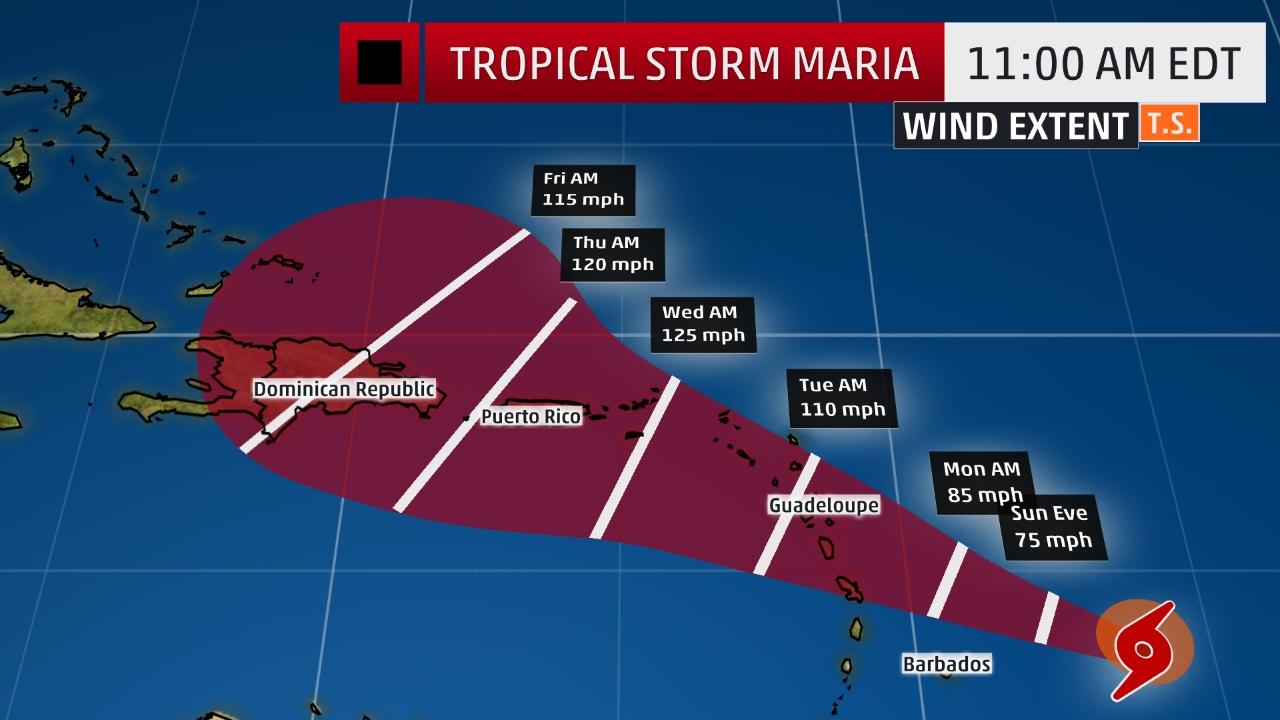(Reuters) – Tropical Storm Maria is likely to reach hurricane strength today, prompting U.S. weather forecasters to issue warnings and watches for a string of Caribbean islands, some of which were battered by powerful Irma less than two weeks before.
Maria was about 405 miles (655 km) southeast of the Leeward islands with maximum sustained winds of 65 (100 km) per hour at 2 p.m. EDT (1800 GMT), the U.S. National Hurricane Center said.
“Strengthening is forecast during the next 48 hours and Maria is expected to become a hurricane later today or tonight,” the forecaster said.
The hurricane center warned that the U.S. and British Virgin Islands and the U.S. territory of Puerto Rico should monitor the storm’s progress. The government of Puerto Rico has already begun preparations for Maria, which is expected to make landfall there on Tuesday, officials said.
The storm is moving west-northwest at about 15 miles (24 km) per hour and is expected to cross the Leeward Islands on Monday night, the NHC said.
Hurricane warnings were in place for the French island of Guadeloupe and for Dominica.
Hurricane conditions also are possible by Tuesday for Antigua, Barbuda, St. Kitts, Nevis, Montserrat, Saba, St. Eustatius, Sint Maarten, St. Martin, St. Barthelemy and Anguilla, the NHC said.
Tropical storm conditions were possible on Monday or Tuesday for St. Lucia, Martinique, Barbados, St. Vincent and the Grenadines.
Maria is approaching the eastern Caribbean less than two weeks after Irma hammered the region before overrunning Florida. The powerful Category 4 storm killed at least 84 people, more than half of them in the Caribbean.
A second storm, Hurricane Jose, was in the Atlantic Ocean about 355 miles (575 km) southeast of Cape Hatteras, North Carolina, with top sustained winds of 90 miles (150 km) per hour, the NHC said. Jose is heading north, and its eye is expected to remain off the U.S. East Coast.





